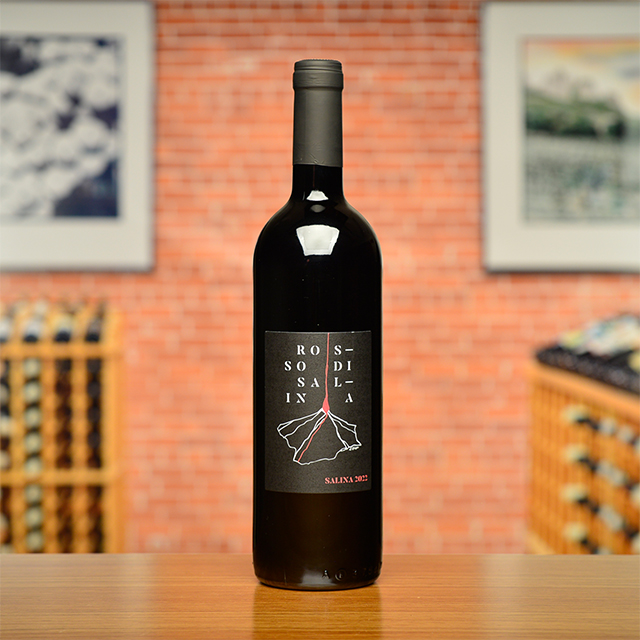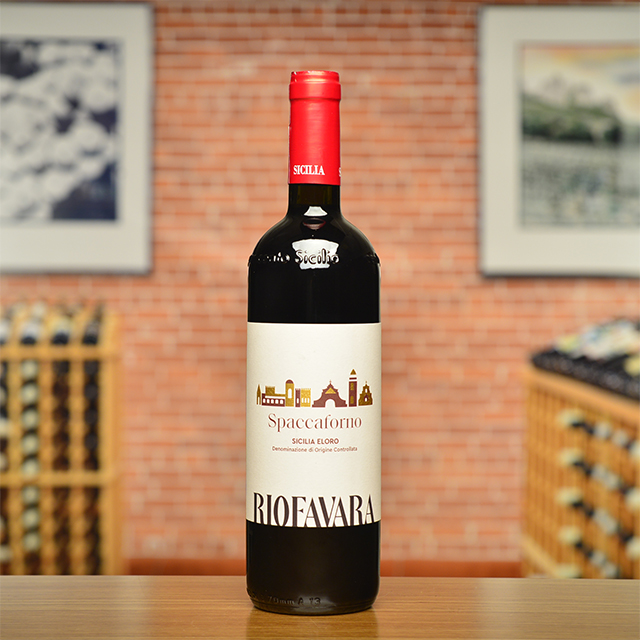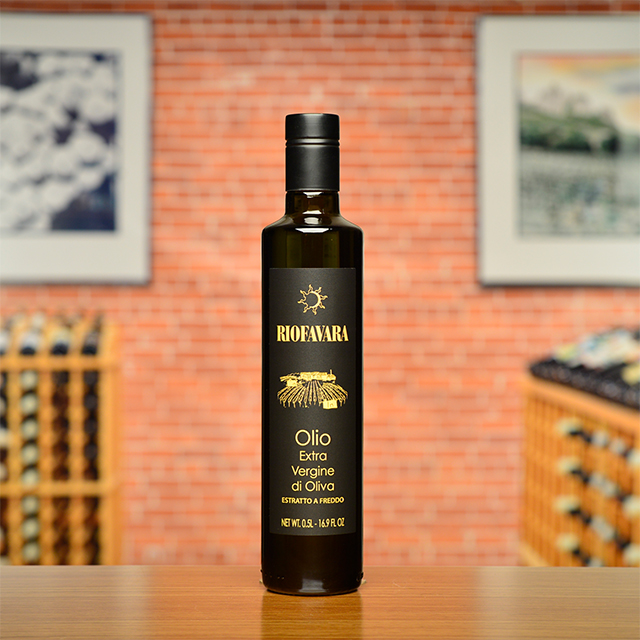Notify me
2019 Vittoria Frappato
Portelli
It’s hard to think of Sicily without thinking of food, and any occasion featuring Sicilian food on the table calls for a cool bottle of Frappato. Alessandro Portelli fashions a remarkably fragrant, agile rendition of the grape in the sun-kissed countryside around Vittoria, deep in Sicily’s dusty southern reaches. Baked eggplant dishes, flame-seared tuna steaks, and red-sauce pastas loaded with olives and capers are just a few ideas you might consider for a Sicily-inspired feast. The ambrosial perfume of lavender, wild strawberry, and sour cherry in this lifted red will make the flavors on your plate sing.
—Anthony Lynch
| Wine Type: | red |
| Vintage: | 2019 |
| Bottle Size: | 750mL |
| Blend: | Frappato |
| Appellation: | Vittoria Frappato |
| Country: | Italy |
| Region: | Sicily |
| Producer: | Portelli |
| Winemaker: | Salvatore and Alessandro Portelli |
| Vineyard: | Planted in 1982, 4 ha |
| Soil: | Clay |
| Farming: | Organic (certified) |
| Alcohol: | 12.5% |
More from this Producer or Region

2019 Eloro Nero d’Avola “Sciavè”
Italy | Sicily
“Sciavè is the result of ancient clones of Nero d’Avola which, besides exalting the limestone matrix of its terroir of origin in the Eloro appellation, carry forth the elegance gleaned from patiently aging the wine in barrel.”

2022 Rosso di Salina
Italy | Sicily
This rosso translates the island’s eruptive nature with a vibrant energy, offering otherworldly red fruit seasoned with smoky, peppery nuances that recall the ashy volcanic soil.

2020 Spumante Ancestrale
Italy | Sicily
A sparkling wine from Mount Etna that tastes like a day spent in the sun. Notes of juicy blood orange and pineapple have salty, flinty inflections from the small vineyard’s volcanic home by the sea.

2022 Eloro Nero d’Avola “Spaccaforno”
Italy | Sicily
The Padova family’s Spaccaforno is generous but not heavy, with suggestions of blackberry, licorice, and spice leading to a lively, chalky finish.

2021 Terre Siciliane Rosso “Donna Bianca”
Italy | Sicily
Delicate floral perfume, medium body, and velvety tannin.

2023 Terre Siciliane Bianco “Nsajàr”
Italy | Sicily
“Nsajàr” means “to try something new” in the local dialect, and this wine is the epitome of creating something new from something old.

2023 Etna Rosso “Sciare Vive”
Italy | Sicily
Hints of ripe cherry and tar soar from the glass, and the chewy mouthfeel is marked by an undeniable volcanic grit—a signature of Etna reds.

2019 Terre Siciliane Grenache “Vigna degli Architetti”
Italy | Sicily
Grottafumata’s first release from the “Vigna degli Architetti” delivers deep, ripe fruit with elegance and grace.

Spumante Metodo Classico Extra Brut
Italy | Sicily
A citrusy and floral sparkler with a stony, bone-dry finish. Mamma mia!

2024 Olio Extra Vergine di Oliva
| Sicily
This aromatic golden nectar has a buttery richness and just the right amount of spicy kick.
 /
/
About The Producer
Portelli
In the southeastern corner of Sicily, west of Modica and Ragusa, the town of Vittoria is the home of Sicily's sole DOCG (Italy's strictest form of wine certification), known as Cersuolo di Vittoria. Cerasuolo is an enlightened blend of Frappato and Nero d'Avola, and the two grapes when blended melt into each other in a harmonious symphony of flavor and texture. I fell in love with the wine and its medium-bodied, sensual, seductive personality. Then I discovered the Portelli family, Salvatore and his son Alessandro, and have been duly impressed with their mastery of these fine examples of southern Sicilian charm. Their wines are fresh, and joyful to drink, all while being faithful representatives of their native land. Welcome to a new KLWM standard.
About The Region
Sicily

Italy’s southernmost region and the largest island in the Mediterranean, Sicily has no shortage of sunshine to grow high-quality grapes on a yearly basis. It also does not lack a history of winemaking: since the Greeks settled here almost three millennia ago, the vine has played a major role in the island’s agricultural makeup. Production of cheap bulk wine for blending dominated much of its recent history until now, as we are witnessing a quality revolution that puts forth its great diversity and quality of terroirs, indigenous grape varieties, and local production methods.
While Sicily’s historical reputation is for sweet wines—Marsala and the Muscats of Pantelleria stand out—a number of dry whites and reds are enjoying the spotlight today. The cooler, high-altitude slopes of Etna, with its ashy volcanic soils, have seen an explosion of activity from producers both local and foreign; both whites (primarily from Carricante) and reds (Nerello Mascalese) here are capable of uncommon freshness and finesse. Other noteworthy wine regions are Eloro, where Nero d’Avola gives its best; Noto, an oasis of dry and sweet Moscatos; Vittoria, with its supple, perfumed Frappatos; and Salina, where Malvasia makes thirst-quenching dry whites and deliciously succulent passiti.
Countless foreign invasions over the centuries have given Sicilian architecture and cuisine a unique exotic twist, making it a fascinating destination for gourmands as well as wine importers. With a wealth of dedicated artisans proud to show off the riches of their land, you can bet there are many exciting things still to come from this incredible island.
More from Sicily or Italy
2024 Olio Extra Vergine di Oliva
Riofavara | Sicily
2021 Etna Rosso “Crasà Contrada”
Vigneti Vecchio Italy | Sicily
Spumante Metodo Classico Extra Brut
Riofavara Italy | Sicily
2021 Terre Siciliane Rosso “Donna Bianca”
Vigneti Vecchio Italy | Sicily
2020 Vino Rosato “SuperLuna”
Masseria del Pino Italy | Sicily
Spumante Metodo Classico Extra Brut
Riofavara Italy | Sicily
2022 Eloro Nero d’Avola “Spaccaforno”
Riofavara Italy | Sicily
2022 Rosso di Salina
Vignedimare Italy | Sicily
2023 Olio Extravergine di Oliva Biologica
Grottafumata | Sicily
2023 Etna Rosso “Sciare Vive”
Vigneti Vecchio Italy | Sicily
2019 Vino Rosso “I nove fratelli”
Masseria del Pino Italy | Sicily
2021 Terre Siciliane Nerello Mascalese “Lato Sud”
Grottafumata Italy | Sicily
2024 Olio Extra Vergine di Oliva
Riofavara | Sicily
2021 Etna Rosso “Crasà Contrada”
Vigneti Vecchio Italy | Sicily
Spumante Metodo Classico Extra Brut
Riofavara Italy | Sicily
2021 Terre Siciliane Rosso “Donna Bianca”
Vigneti Vecchio Italy | Sicily
2020 Vino Rosato “SuperLuna”
Masseria del Pino Italy | Sicily
Spumante Metodo Classico Extra Brut
Riofavara Italy | Sicily
2022 Eloro Nero d’Avola “Spaccaforno”
Riofavara Italy | Sicily
2022 Rosso di Salina
Vignedimare Italy | Sicily
2023 Olio Extravergine di Oliva Biologica
Grottafumata | Sicily
2023 Etna Rosso “Sciare Vive”
Vigneti Vecchio Italy | Sicily
2019 Vino Rosso “I nove fratelli”
Masseria del Pino Italy | Sicily
2021 Terre Siciliane Nerello Mascalese “Lato Sud”
Grottafumata Italy | Sicily
Kermit once said...

Kermit once said...
You don’t have to be rich to cellar a great wine.














